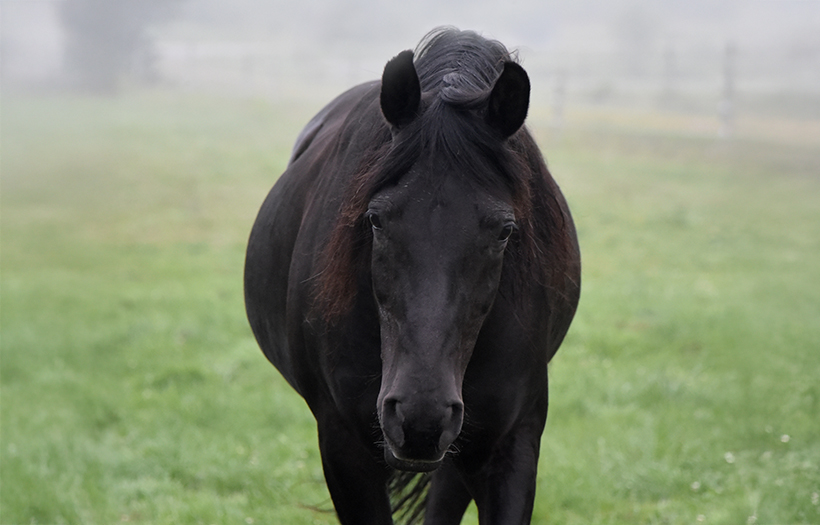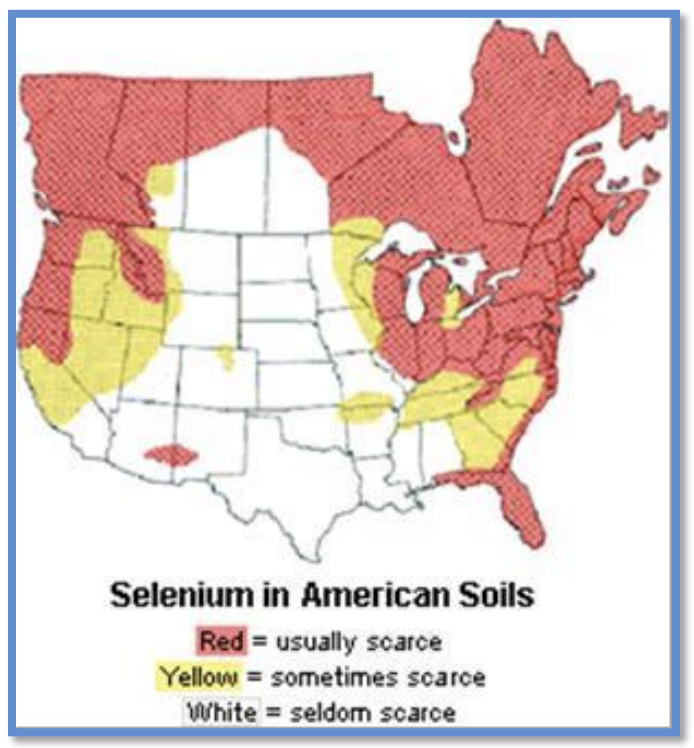Understanding Selenium

SELENIUM
Lately, the death of horses due to selenium deficiency has received quite a bit of press on social media as well as on TV. Unfortunately, the cases that made the headlines were not the only ones reported. Many questions have yet to be answered and all sorts of information has been passed around—some accurate and some less so. Let’s have a closer look at the situation and try to make sense of it as scientifically as possible.
WHAT IS SELENIUM?
Selenium is a trace mineral (or micromineral), which means it is essential to bodily functions but in very small quantities as opposed to macrominerals such as calcium or magnesium which must be provided in larger amounts. Even though selenium is essential, it can quickly become toxic in excess. It should be noted, however, that cases of deficiency are much more frequent than cases of toxicity, especially in this province.
Selenium functions mostly as an antioxidant. It works in partnership with vitamin E to protect cell membranes from free-radical damage. Selenium and vitamin E work best when both are sufficient in the horse’s diet.
The problem with selenium is that it is absent—or present in infinitesimal amounts—in our soils, as it is the case in all of Eastern North America. As a result, it is not found in plants, such as hay or grain, that grow in these areas. To find hay that contains selenium, we would have to turn to the central regions of the continent.

One question often comes up: How about wild horses? Well, there were no horses—wild or not—in America before Europeans settlers introduced them, and the breeds we’ve developed were chosen for their performance rather than their hardiness. Most of them wouldn’t survive a year in the wild, even in the best conditions.
WHAT ABOUT CONCENTRATES?
The large majority of concentrated feeds sold in Quebec are supplemented in selenium. But is the horse given enough concentrate to meet its needs? The recommended feeding rates printed on feed tags guarantee that the mineral and vitamin requirements will be met, however that does not mean that your horse actually needs that much fed on a daily basis. Only body condition should determine your horse’s need for concentrates. Concentrates should mainly be a source of calories. This means that if you feed your horse less than the recommended levels and that its body condition is adequate (neither too thin nor too fat), the ration should be supplemented.
The recommended amounts of feed per horse per day may seem surprising but when formulating a feed, we must take into account the fact that some horses can be fed up to 8 kg of concentrates a day. If the selenium content was too high, some horses would risk toxicity. It is easier to supplement a ration than to remove selenium from a formula…
As for horses who are kept on hay or pasture only? Even the best quality forages in Quebec need to be supplemented. It is preferable to use a complete vitamin and mineral supplement than a simple vitamin E-and-selenium supplement since all 17 minerals and vitamins are important and this way other deficiencies can be prevented as well.
SYMPTOMS OF DEFICIENCY
Foals are more likely to develop a deficiency than adults, and this is true for selenium as much as for other essential elements. The effect can be dramatic: some foals die within 24 to 48 hours after birth. If the dam’s selenium intake was insufficient during her pregnancy, the foal is very likely to develop what is referred to as white-muscle disease. Affected foals have malformed muscles, are weak, have difficulty standing and their heart eventually gives out. Broodmares suffering from deficiency have decreased fertility and risk retained placenta. Symptoms of deficiency in adult horses include a depressed immune system, poor performance, stiffness after exercise, more frequent episodes of recurrent exertional rhabdomyolysis (RER or tying up), impaired cardiac function, difficulty swallowing and paralysis.
ORGANIC SELENIUM OR SODIUM SELENITE?
The two main differences between these two compounds are their source and absorption rates. Sodium selenite or selenate comes from the mining industry which means they are mineral in origin. Organic selenium (also known as selenium yeast) is similar to the selenium found in plants. This type is particularly important if your water contains high concentrations of iron or sulfur. These minerals are powerful oxidizing agents that aggregate with mineral selenium and precipitate1 , thus making the selenium unavailable to the animal. Organic selenium does not react with other oxidizing minerals and stays readily available to the horse. In addition, the organic form seems to trigger a better response in pregnant mares and foals. It crosses the placenta more readily and reaches higher concentrations in the milk than sodium selenite. Exercise caution with organic selenium formulated for cattle because there is always a possibility for contamination by ruminant specific drugs.
1 To precipitate: To cause a substance to separate from solution or suspension. Precipitation: The action by which a substance separates from its solvent and is deposited in solid form at the bottom of the recipient.
WHAT ARE MY HORSE’S NEEDS?
Even though the precise selenium requirements are unknown, the NRC recommends 0.1 mg/kg DM, or approximately 1 mg/day for a 500 kg horse. The NRC’s recommended values are known to prevent classic deficiencies, but a study on selenium supplementation (Janicki et al., 2001) suggested that an intake of 3 mg/day would not only prevent deficiencies, it would also result in optimum immune function. Naturally, selenium requirements increase with the level of exercise. The toxicity threshold is set at approximately 5 mg/day.
CONCLUSION
Selenium is a trace mineral essential to the horse but is practically non-existent in our soils. It must consequently be added to your horse’s diet, alongside the 17 other minerals and vitamins that are crucial to its health. Sufficient supplementation is important since mild deficiencies can cause problems that are hard to detect such as a depressed immune system and reduced stamina.
